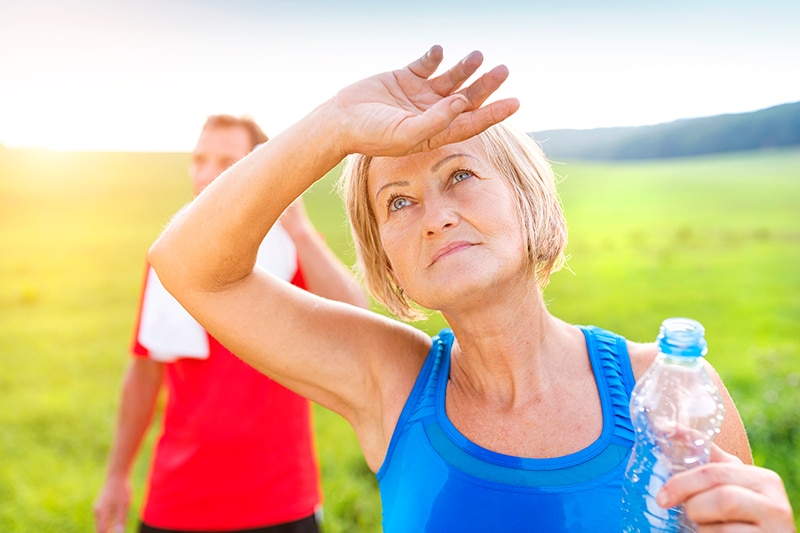Heat Stroke: Don't Get Overheated in the Summer Sun

Don’t let heat stroke interrupt your summer fun. Do you know the warning signs of heat stroke and how to prevent it? Sports Medicine Physician Shane Hudnall, MD, reviews how to stay safe in the summer heat.
What is heat stroke?
Heat stroke is a medical emergency in which your body's ability to cool itself becomes overwhelmed. You can get heat stroke indoors or outdoors. You don't have to be exercising. You can get heat stroke just by being in the heat for an extended time.
Who is at risk for heat stroke?
Everyone is at risk for heat stroke, but those that are at an increased risk include:
- Babies and small children.
- Older adults.
- People with certain medical conditions, including heart disease and obesity.
- People who take certain medications, including some blood pressure medications like beta blockers and diuretics.
- People that just aren't used to the heat. It takes your body about two weeks to get used to exercise or being outside in the heat.
What are the signs of heat stroke?
The signs of heat stroke and heat illness can occur very quickly, especially if you have an increased risk of heat stroke.
The signs of heat illness include:
- Headache.
- Nausea.
- Dizziness.
- Fatigue.
The signs of heat stroke, which is a more severe type of heat illness, include:
- A temperature above 104 degrees.
- Lethargy.
- Confusion.
- Hallucinations.
The warning signs for children are very similar, although children — especially young children — may not tell you they're experiencing any symptoms of heat illness or heat stroke. Watch children closely to see if they're slowing down while playing outside, and make sure they take breaks from the heat.
What should I do if I become overheated?
If you do become overheated, make sure you first get out of the heat. Ideally, move to a cool, air-conditioned room. If that's not available, move into the shade.
Then drink cool liquids if possible, as they'll cool the body down faster. Remove any excess clothing that you have on at the time. You can also apply ice packs to your chest, under your armpits, and over your abdomen in the groin area, which will help cool the body faster. Elevate your legs, too, to make sure that you get blood flowing back to your heart.
If you start to experience severe heat illness symptoms and your symptoms don't improve — like you still feel hot, your headache is getting worse, or you're getting more dizzy — call 911 to get some help.
How can I prevent heat stroke?
First and foremost, try to minimize how much you're outside in the heat. Take frequent breaks, which ideally happen indoors or in the shade if you can't get into an air-conditioned room.
Make sure you're drinking plenty of water. If you are outside for more than an hour, drink fluids that have electrolytes in them.
Another thing you can do is wear light-colored, loose clothing made of wicking fabric. Cotton is not the best material for hot days, because it tends to hold the sweat on you, and you're more likely to have heat illness or heat stroke.
Try exercising or working outside early or late in the day, when temperatures and humidity are not as bad.
Finally, know the signs and symptoms of heat stroke and heat illness so that if you experience them, that you can treat them quickly.
About the Provider
Shane Hudnall, MD, is a sports medicine physician at the Cone Health Sports Medicine Center.